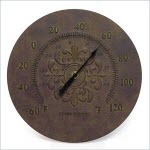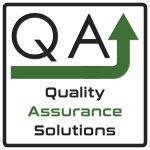Risk Questions and Concerns
 Consider these questions when determining your risk management plan sample…
Consider these questions when determining your risk management plan sample…- What are the possible risks?
- What can go wrong?
- How can someone get hurt?
- If this “event” happens, what may happen?
- After you determine the risk then analyze possible solutions?
- What can we do to minimize this risk?
- What can we design differently?
- What can we do to prevent this risk from occurring?
- How can we improve the risk information we share with the end users?
- Characteristics
- Purchasing
- Production
- Handling
- Shipping
- Servicing
- Inspection
- Acceptance
- Safety by design
- Device features that protect the users
- Written information such as warnings and instructions
Risk Management Plan Sample Steps.
- Create a policy to determine risk acceptability criteria
- Identify potential hazards with regards to the product
- Estimate the risk for each hazard
- Compare the estimated risk to the acceptability criteria (known as risk assessment)
- Implement risk control, actions to reduce the risk below the acceptable criteria
- Communicate the risks internally and externally
- Review feedback / complaints and reevaluate the plan.
Required Documentation to Support Risk Management

- Overview risk management procedure
- Risk Management Plan
- Risk Acceptability criteria
- Risk reduction action plans
- Feedback and corrective action reviews
- DFMEA
- Risk Reviews
- Control the possible risks
- Document the risk issues
- Review the risk plan
- Improve risk issues
Supplier Control
If you are a manufacturer who depends on suppliers for processing, you are the primary responsible party for risk management. You cannot blame your supplier(s) for your lack of risk management with regards to your manufactured product. If your supplier changes or implements a new process change, as a manufacturer you must consider the risk of the change. In this case you;- Review the change
- Assess if new risks have been discovered
- Compare the estimated risk to the acceptability criteria (known as risk assessment)
- Assure supplier implement risk control, actions to reduce the risk below the acceptable criteria
Risk Management during Design and Development
 The
design team designs the product to minimize the potential safety risks
during the product lifetime. They try to create the design so the risk
is below the acceptability criteria. Of course, it’s everyone’s benefit
if the design prevents safety issues from occurring in the first place,
but this is not always possible. The risk management plan sample
includes considering design prevention features and the need for future
controls such as warning, instructions, and manufacturing controls.
Identify risk issues starts with considering the medical device’s
intended use, its characteristics and its environment.
The
design team designs the product to minimize the potential safety risks
during the product lifetime. They try to create the design so the risk
is below the acceptability criteria. Of course, it’s everyone’s benefit
if the design prevents safety issues from occurring in the first place,
but this is not always possible. The risk management plan sample
includes considering design prevention features and the need for future
controls such as warning, instructions, and manufacturing controls.
Identify risk issues starts with considering the medical device’s
intended use, its characteristics and its environment. Designers need to consider the data from post-production information of similar devices. This post production data comes from complaints and feedback from end-users.
In addition, designers should incorporate manufacturing controls and consider manufacturing controls from similar products.
During the design, the designing team considers hazards and potential hazards. They consider the devices use, features, and the environment. Not only are the designers concerned about end use but they need to be concern about the manufacturing hazards of the equipment.
Review of the Risk
The design of the risk management plan sample needs to be formally reviewed. The review includes assuring the designers addressed all hazards, potential harm, and risk. In addition, the review team assesses the control of the risksMultiple Product Risk Assessment
If the product is use with other products then risk assessment must be given to each separate product and the combination of the products. Assess the risk to each individual unit and the product system.Read this interview with someone who works within the occupational risk managment field.
After reviewing this article on a Risk Management Plan Sample see here for more on the ISO 9001 definition
See here for the specific definition of risk management,

Quality Assurance Solutions
Robert Broughton
(805) 419-3344
USA
No comments:
Post a Comment